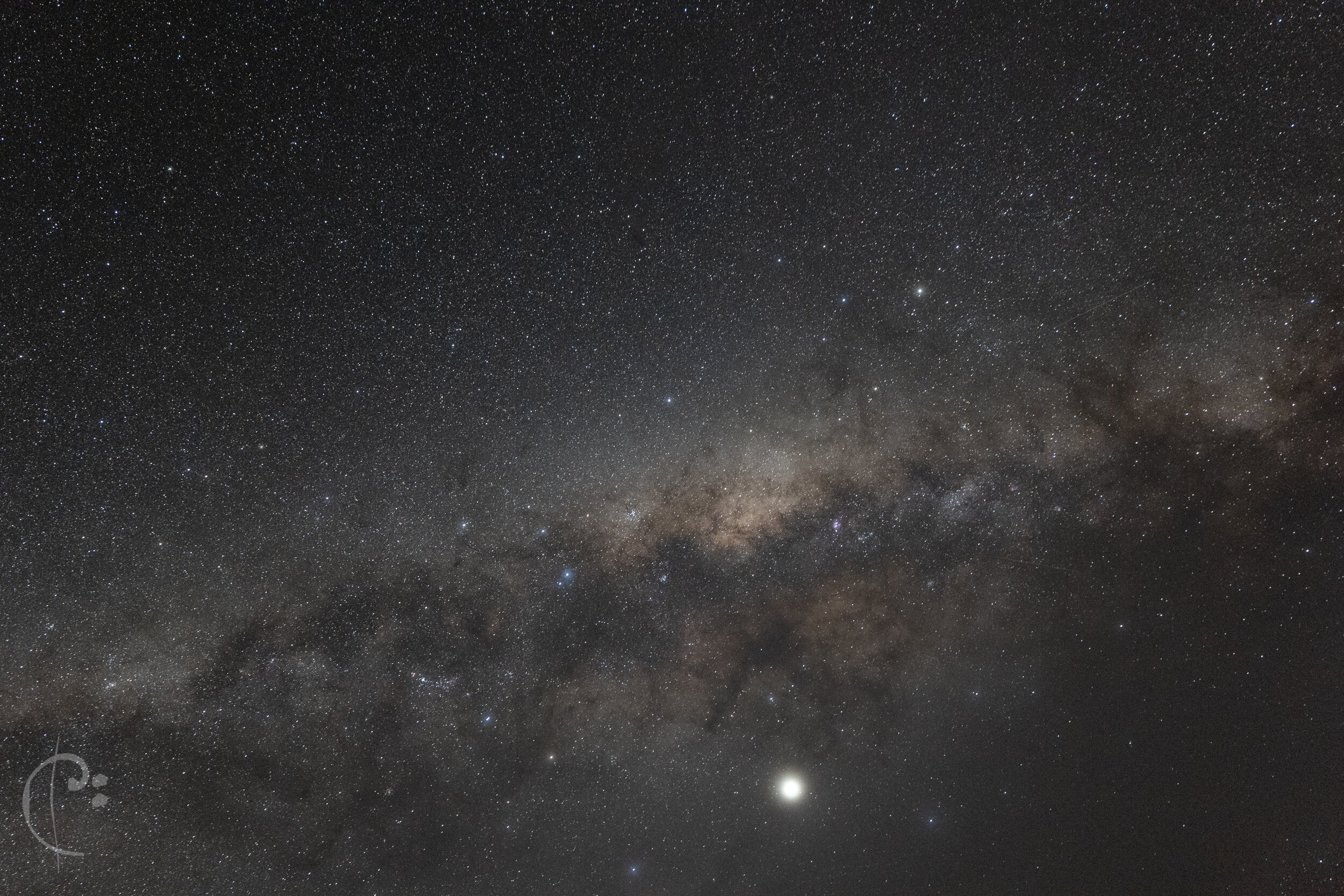The “Galactic Kiwi”, Scorpio constellation, and Saturn sit in the center of the Milky Way’s arch. To the far left we can see the Magellanic Clouds, as car trails light up the magnificent Lindis Pass.
Easily one of my favorite astro-photography shots to date. This photo was taken to test new gear by both Panasonic Lumix and Syrp.
Syrp Genie II Pan-Tile (robotic Tripod Head)
For Lumix I was testing the new S1H camera and their 24-70mm s Pro f/2.8 lens (which I purchased as soon as it became available). For Syrp we were ironing out any bugs in the new panorama-grid feature which lets you take massive photos like this very easily.
Lumix S1H and the S pro 24-70mm f/2.8 zoom
It’s a gigantic photo: 21’000 pixels across by 12’000 high.
This photo is comprised of 56 individual frames, shot in a panoramic-grid. On paper the method is quite simple: I take a few rows of images for the sky, being careful to keep the shutter fast enough to avoid star trails:
Saturn and the ‘Galactic-Kiwi’. A single frame from the center of the panorama.
Then I take some longer exposures for the ground to bring out the detail in the grass (which would otherwise be pitch black):
Detail in the ground captured by long exposure. Note the trailing of the stars.
Using a robotic head means that all of these images align perfectly in the stitching software (I use ptGUI, this job is too complex for Photoshop!). Combining the star and ground photos is relatively easy.
What made this one a LOT more complex were the car trails. There were vehicles coming through the scene every 60 seconds or so, all with different lights, changing the lighting of the foreground dramatically.
This meant I had to take a couple of extra sweeps of the foreground to make sure I had lighting that would match from one photo to the next.
Individual photos from the “sky” sweep
There are a lot of fine details to take into account when shooting with this technique. So rather than write them all down I’ve made a video (with the help of the guys at Syrp) that takes you through the whole process.
Make yourself a coffee and grab a couple of biscuits - it’s quite long!





